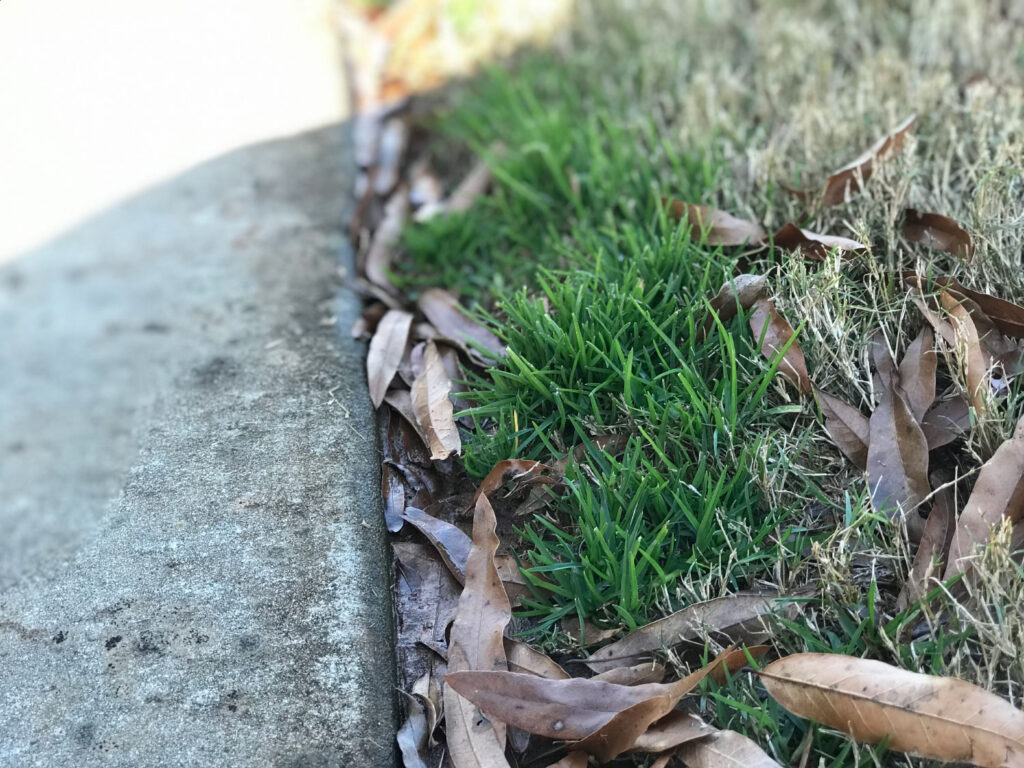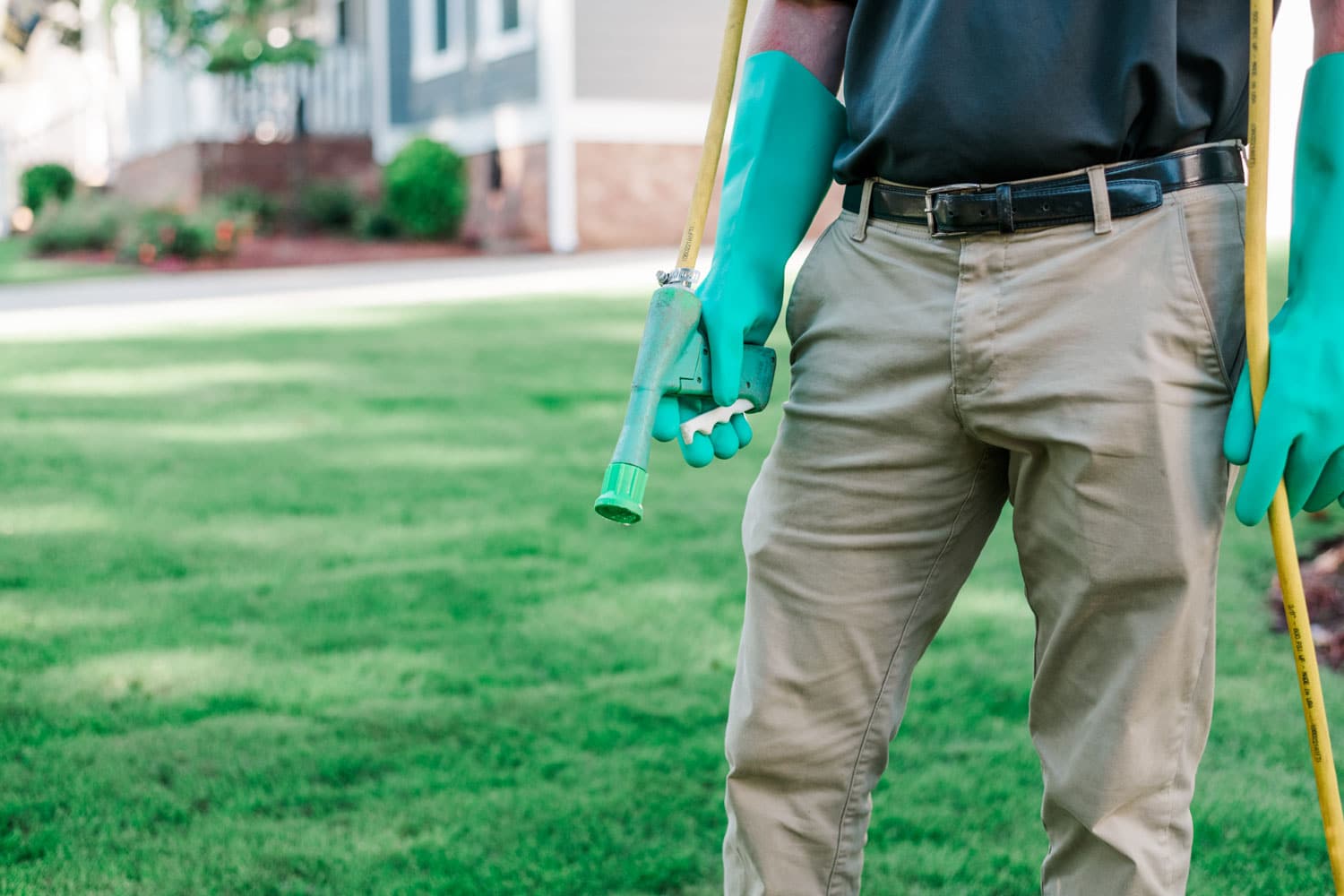Arguably the most prolific and challenging winter weed in turf is Poa annua. Colloquially known as ‘Poa,’ ‘Poanna,’ or ‘Annual Bluegrass,’ Poa annua, is a winter-annual, grassy weed with a fascinating biology, creating a dynamic challenge in dormant turf. If you notice apple green, seedy patches in the middle of a tan lawn, chances are, it’s this pesky little pest.
What is Poa annua?
Simply put: it’s a winter-annual, grassy weed.
As an annual, it germinates (emerges) from seed every year instead of returning from existing roots in the soil from previous years. They are prolific seeders, even by annual standards. From maturity through the end of their growing season, which could last through spring, they seed unendingly, making an eyesore even more unappealing.
They begin germinating in early fall as soil temperatures drop, and they become exceedingly obvious in warm-season turfs, such as bermuda and zoysia, as they retire to dormancy. While cold temperatures will slow them down, they will remain green through winter in our climate. Their fine-textured, apple green leaves and white seed heads contrast with the tan hues of dormancy.
What Can Be Done about It?

As is the case with all weeds, the best defense against weeds is a good offense. In the early fall, dense, healthy turf shades the soil surface, reducing the incidence and success of new seedlings. Even into dormancy, density plays a role in shading the soil surface.
This density is achieved by maintaining sound fertility, mowing, and watering practices. Partnering with your chosen lawn care company means the fertilization needs are taken care of. Mowing and watering are just as important to turf health. Cutting bermuda or zoysia 1.5-2” every 7-10 days is a good baseline rule to limit injury and promote density. Watering 1” over 2-3 non-contiguous days provides the turf with sufficient water without over-watering.
Beyond fertilizing, mowing, and watering, often referred to as cultural practices, applying weed control products can also be effective. Applying pre-emergents at appropriate times and rates can limit the incidence of germination, while using post-emergent products can take care of any that may sneak past that barrier.
Why Is It So Challenging?
Poa annua is a fascinating, diverse genome. Simply stated, repeated use of a commercially available control product can result in identifying plants that aren’t able to be harmed by that product. Imagine, for a moment, that you intentionally grew a bed of only poa and then repeatedly applied the same product. While all of the plants look the same, you notice one isn’t injured by the applications. After self-pollination, that plant produces seeds that become plants that also aren’t injured by that product, creating a population resistant to that active ingredient.This is known as selection.
Over time, even some of the most well-known names in weed control products available at home improvement stores have been thwarted by this process. Teaming up with a lawn care company gives your yard access to a number of controls, both pre- and post-, and knowledge of what is still effective for use in control of poa.
Beyond selection, it’s important to note that poa grows during the colder months in Georgia. While it won’t go dormant like our bermuda and zoysia, it will slow growth on the coldest days. As discussed in this blog about winter weed control, response slows during cold weather due to slower growth. It should, eventually, express injury, but more time is needed.
Important Takeaways:
- Poa annua is a winter-annual, grassy weed, and a pest worldwide.
- It’s a prolific seeder, with constant seedhead presence, once mature.
- A dense lawn can help reduce it’s pressure.
- The use of weed control products can be effective both pre- and post-emergence.
- Selection is always a possibility with poa, and alternation where possible is ideal.
- Cold temperatures will slow down the response of control products.








